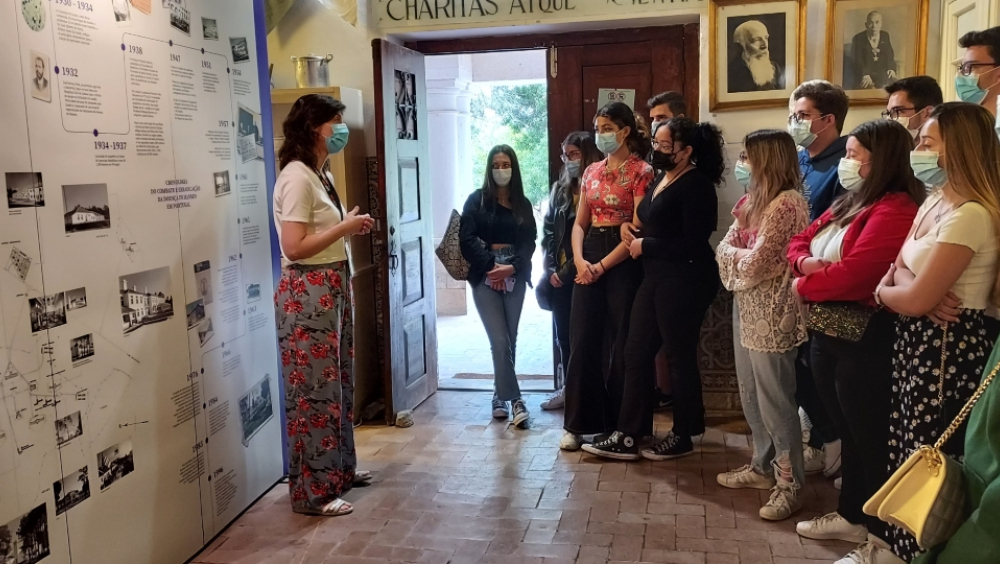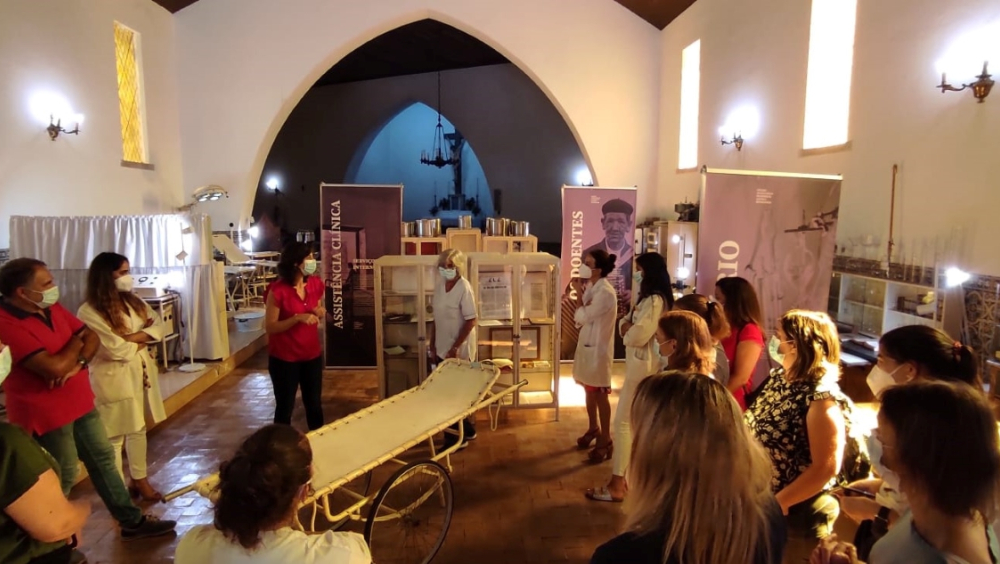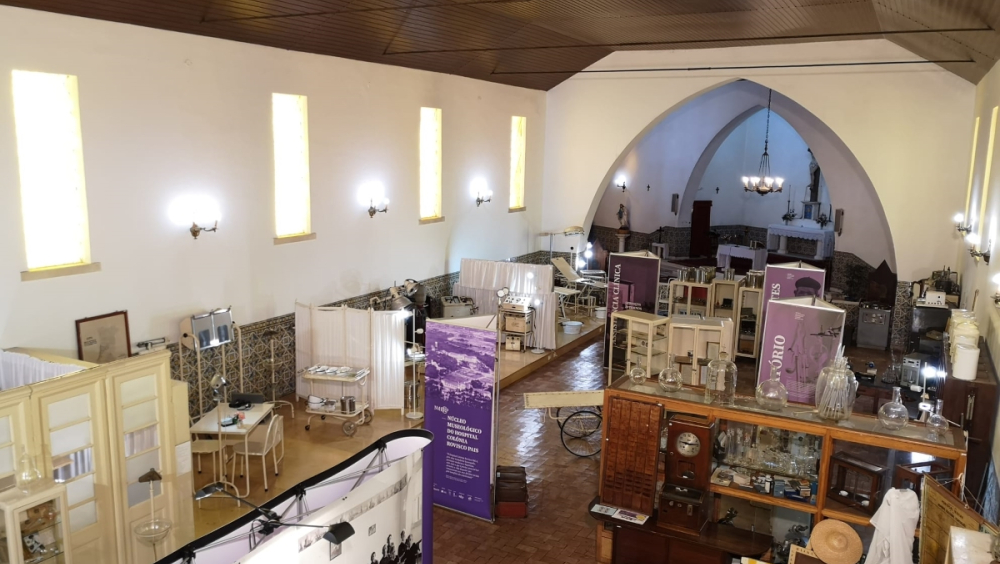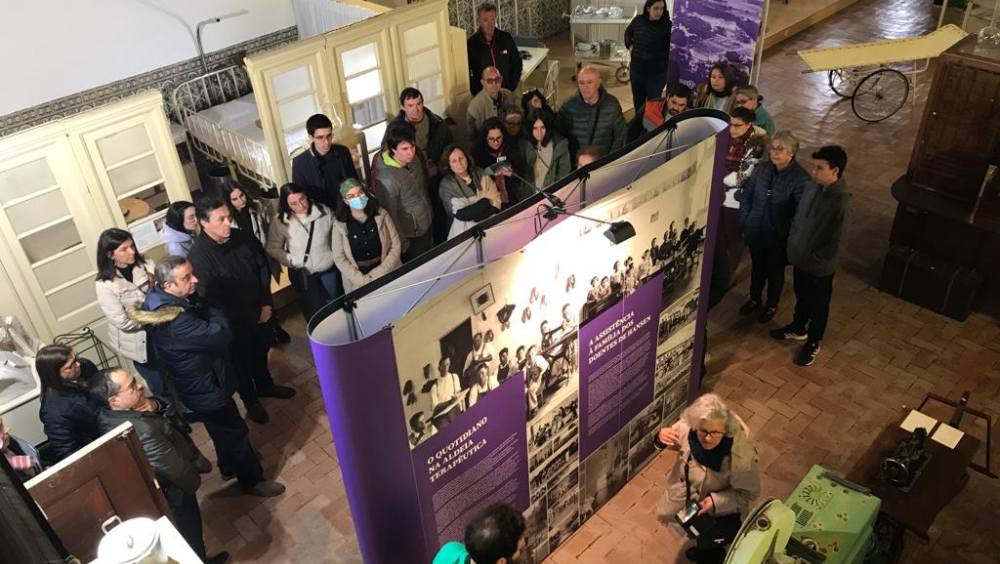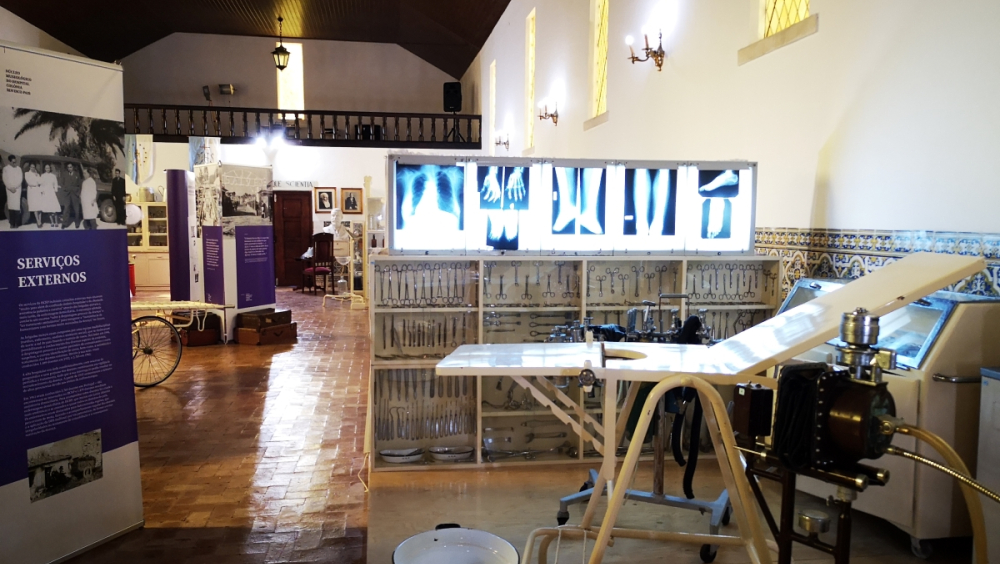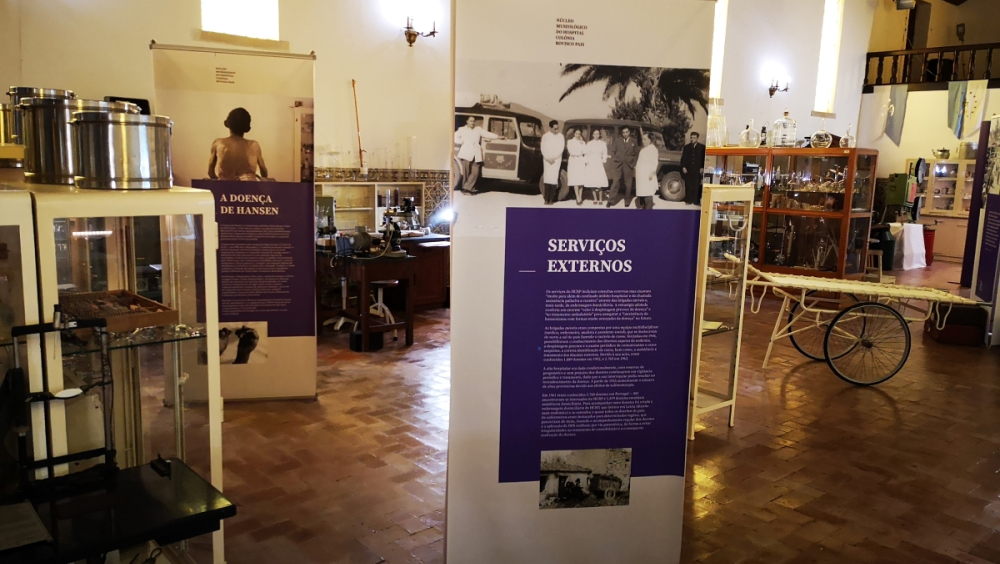Hansen Stories Heritage | Museum Open Days
Illness is not only a change in the normal state of health, or a result of a pathogenic agent, it is also a set of symbols that are culturally associated with it. This human vulnerability, regardless of the name it assumes, is one of the key themes in human history. And the recent pandemic has exposed some similarities in human behavior across centuries or in different regions. Our project has leprosy as its central theme, an ancient disease that has not yet been eradicated and which has plagued Europe in past. Starting from the history and memories of the last Portuguese leprosarium, o Centro de Medicina de Reabilitação da Região Centro-Rovisco Pais (CMRRC-RP) have traveled a rewarding path with a view to safeguarding and revitalizing the heritage of Hospital Colónia Rovisco Pais, with the involvement of the community, the support of the Sasakawa Health Foundation (Japan) and the technical support of CulturAge, a company that works in the field of cultural heritage management. The proposal for a pilot heritage education program developed from the Museum of the last portuguese national leprosarium, known as Hospital Colónia Rovisco Pais, in two of the most endemic municipalities in the mid-20th century. The intergenerational challenge will make possible to know the memories perpetuated around the disease and the hospital and will enable program participants to build new stories and a collective exhibition resulting from their own experience in open days full of dynamics around the tangible and intangible heritage of the old Hospital.
Leprosy has remained in Europe shrouded in a certain stigma and has been considered an emblematic disease. In the collective memory it remains associated with myths arising from the medieval tradition. Currently, there is some lack of knowledge about the disease, resulting from the fact that it no longer constitutes a public health problem in European countries. These facts have influenced the interpretation of leprosaria, which from the 19th century onwards proliferated throughout the world, as a result of being classified as an infectious disease. Arising in a context of new notions of public health and the medicalization of the disease, leprosariums or colony hospitals for leprosy patients followed the guidelines in vogue of isolating patients to contain contagion, while the therapeutic solution that cured the disease was not generalized. Today, in Portugal, the disease does not affect more than a dozen cases, but this was not the case until the 20th century and, therefore, several measures were taken to eradicate it in Portuguese territory, including the creation of the Hospital Colónia Rovisco Pais (HCRP), the last leper colony. The HCRP was inaugurated in 1947 and adopted the name of the benefactor who, leaving the legacy to the Civil Hospitals of Lisbon, made its construction possible. Located in an area equivalent to around 139 football fields, it was an authentic therapeutic village, with capacity for around 1,000 patients. It materialized a qualified answer from the State in attending these patients, who did not have enough vacancies in the wards in Lisbon and Porto and who were not admitted to other hospitals. It constituted the only national unit of medical-social assistance and research, built from scratch, entirely dedicated to leprosy patients, in Portugal for almost 40 years. It promoted prophylaxis, offered surveillance and medical and surgical treatment, social support for patients and their families, as well as rehabilitation through physiotherapy, plastic surgery, ergotherapy and play therapy. It had a hospital, nursing homes for the elderly or disabled, pavilions for patients in an intermediate state, small neighborhoods for patients from the same family, chapel, nursery and preventorium for healthy children and a neighborhood for employees. Functioning as a central dispensary, and epicenter of the fight against leprosy in Portugal, it had a set of specialized services created for the treatment and study of hansen's disease which included, in addition to internal services, external services such as mobile brigades, which traveled the country, to make the diagnosis of new cases, or the home nursing that monitored the outpatients, or who, in the meantime, had been discharged from the hospital. Between 1947 and 1976, the hospitalization, which was only imposed on contagious cases, relied on sulphonotherapy, adopted in the first decade of activity at the former Hospital. However, in Portugal, the prevalent clinical form was lepromatous leprosy, the most contagious and chronic variant. At the beginning of its operation, 867 patients were known, but its action made it possible to know and monitor 2,760 patients and contain the number of cases until the adoption of multidrug therapy and integration into the National Health Service in the 1980s. Extinct in 1996, and converted its facilities into CMRRC-RP, and through the Hansen Service, it continued to support a hundred former patients who, after being discharged, continued to reside in the institution for social reasons or self-will. Today there are still two former patients. A unique heritage remains behind, and the desire not to forget history was perpetuated over the decades. It was precisely the dream of preserving the history of the ancient therapeutic village, combined with the tenacity of the "heritage guardians" and the successive administrations of the CMRRC-RP that made it possible to implement a plan to safeguard the cultural heritage of the HCRP, which has guaranteed its available to the community and will ensure its enjoyment for generations to come. In this mission, and since 2017, it has had the support of the Sasakawa Health Foundation, which collaborates with the WHO. In the course of the projects, and faced with an institution, with a comprehensive mission, and with a considerable set of past fragments, the need to adopt a holistic strategy for managing and valuing and revitalizing this heritage became evident. Accompanied by a specialized company (CulturAge), actions began to collect, restore, inventory and repackage the photographic and documentary archives, objects with museological potential and the scientific library. But it quickly became evident that in addition to the objects and buildings, the revitalization of the heritage would pass through the rich multiplicity of memories and experiences that reflected the different perspectives of the characters in this story and that presented as a common denominator - Hansen's disease and a story of overcoming. The growing involvement of employees, some descendants of former employees or patients, the enthusiasm of the community that helped to identify fragments of the past ended up driving the creation of a new axis of action focused on the collection of oral history that gave rise to the Hansen Stories project started in 2020, which resulted in a storytelling website, an itinerant exhibition with the same name and more recently the publication of the book “History and memories of Hospital Colónia Rovisco Pais”, all these results have been received for the community well beyond initial expectations. The exhibition, for example, has been requested by several institutions and has toured for all country. The path taken there was vital in the process of musealization of the first pole of the Museum (NMHCRP), which since 2021, and through the cultural dynamics created have been extremely important for the revitalization of this heritage, fostering reflection, critical thinking and learning and has allowed to demystify Hansen's disease. At the same time, the identity feeling has been quite visible both in the community and in the visitors of the NMHCRP, as well as in the attention that the media has given to the project. A visit to the Museum has been requested by educational institutions and included in heritage visit programs within the scope of partnerships with municipal institutions.
Europe's cultural heritage is a rich and diverse mosaic of knowledge, manifestations and fragments of the past that testify to the experiences of previous generations and, constituting a heritage for future generations, are also an important resource for social and cultural progress and for the social cohesion in Europe. The European dimension is evident in our history, given that the disease affected Europeans in various periods of history and because the HCRP, being the national leprosarium, emerged in the context of similar health policies and modern leprosariums. Thus, yesterday and today this theme had a strong potential to create networks and formal or informal routes, which simultaneously carry common denominators and regional particularities. The path of safeguarding and revitalizing the HCRP heritage has had Sasakawa Health Foundation as its main partner. The proposed pilot project may be implemented and replicated in other places in Europe or the world. We intend to inspire similar initiatives and promote future exchanges with similar stories and places/institutions in Europe. In any case, by promoting the recording of stories in Portugal, we are already contributing to the preservation and promotion of this heritage, at a time when the themes of the history of health have gained special interest due to what happened with Covid 19, and in a year commemorating the 150th anniversary of the identification of Hansen's bacillus. The design of a program centered on the persons, of different generations and institutions from two of the cities in the most endemic region, will promote cooperation, diversity, accessibility and sharing of the endogenous resource – cultural heritage. And it allows everyone to be involved in safeguarding, building a community event and an exhibition resulting from a collective exercise, where individual stories are displayed that link the past to the present, leaving it for the future.
